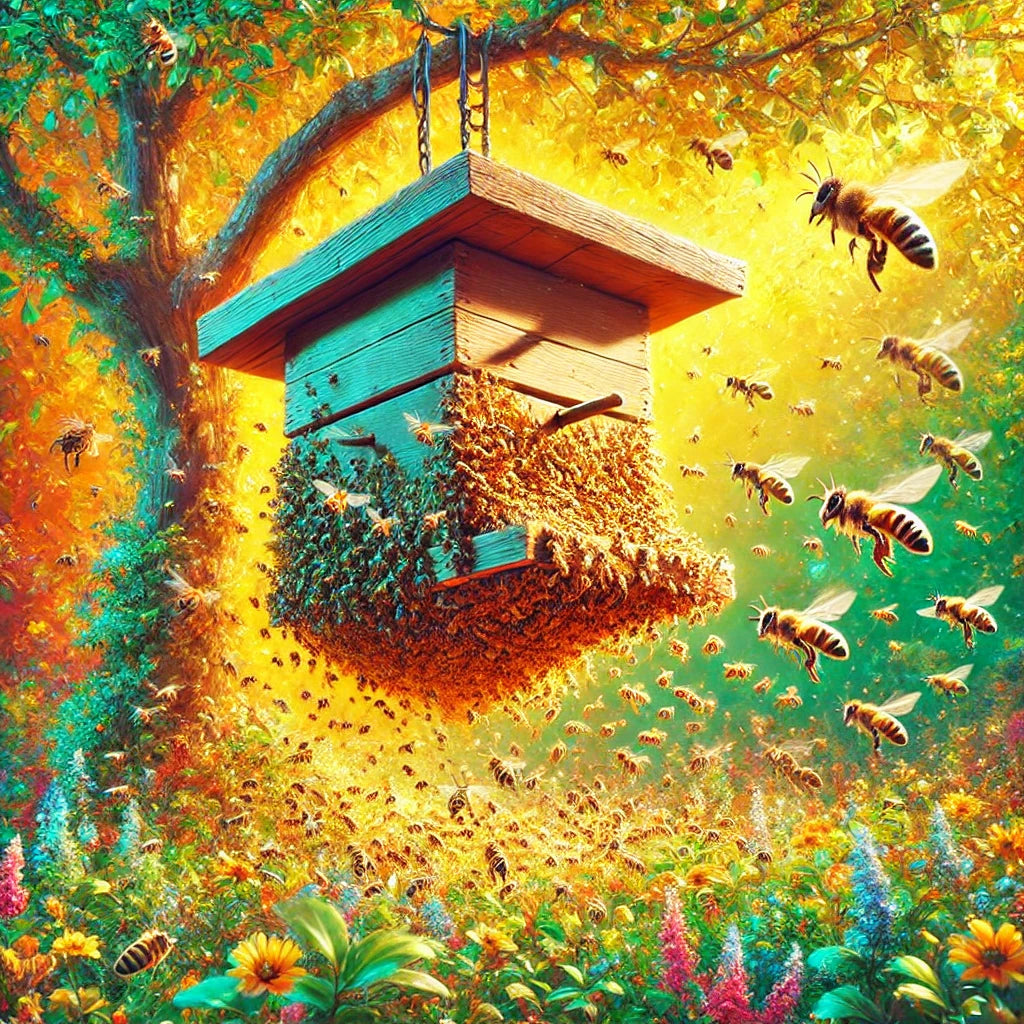In the world of beekeeping, catching bees in a swarm trap is a rewarding experience. But what happens when a single trap catches two swarms simultaneously? With the help of Swarm Commander attractants, beekeepers can experience this rare phenomenon.
If you’re new to this process, understanding how honey bee swarm trap plans work, and the role of attractants, can help you achieve similar success. Let’s explore how a well-placed trap can yield two swarms at once and what it means for your apiary.
Why Do Bees Swarm?
Swarming is a natural part of the life cycle of bees, especially when colonies grow too large or face limited space. Bees split their colonies, sending out scouts to find new homes. This is where swarm traps become essential. A single trap, when set up with attractants, can lure in multiple swarms during the high season, especially if it’s placed in a desirable location.
The Role of Swarm Traps in Catching Bees
Swarm traps are essentially temporary hives designed to attract swarming bees. Following the right trap plans, such as those found in honey bee swarm trap plans PDFs, can set you up for success. The trick is using an effective attractant, like bee trap attractants, to lure not just one, but potentially two swarms into a single trap.
By mimicking the scent of a queen bee, these attractants make the trap irresistible. For beekeepers, this means the possibility of a double-catch scenario when two colonies converge at the same location.
The Case of Two Swarms in One Trap
Imagine checking your trap and finding not one, but two swarms inside! This situation happened to an experienced beekeeper, and it highlights the power of correct trap placement and attractants. Having the right how to start a bee farm knowledge and equipment can make such a feat achievable. Traps positioned near water sources or flowering plants often perform best.
Tips for Maximizing Swarm Trapping
Here’s how you can improve your chances of catching multiple swarms:
- Location is Key: Place traps in areas with abundant forage or near the bees' original hive.
- Attractants are Essential: Use quality attractants, like Swarm Commander, to draw in scout bees quickly.
- Monitor Regularly: During swarming season, check traps frequently to ensure you don’t miss out on catching multiple swarms.
Benefits of Multiple Swarms for Your Apiary
Catching multiple swarms has immense benefits. First, it allows you to expand your apiary rapidly. Second, it adds genetic diversity, leading to stronger colonies. Lastly, capturing wild swarms contributes to sustainable beekeeping. If you’ve been wondering whether why are honeybees so vital to agriculture, the answer lies in their ability to pollinate vast crops, ensuring the health of ecosystems. With double swarms, these benefits are amplified.
Double Your Swarm Catching Success Today!
Trapping two swarms at once might seem like an anomaly, but with the right tools and techniques, it can become a possibility. Start by using Swarm Commander attractants and follow trusted honey bee swarm trap plans to set up your trap. Keep your traps well-monitored during the high swarming season and increase your chances of doubling up on swarms.
Maximize your chances of catching multiple swarms with Swarm Commander attractants and tried-and-tested honey bee swarm trap plans. Get started on expanding your apiary today!
Frequently Asked Questions:
-
How far should I place swarm traps from the original hive?
It’s recommended to place traps at least 500 feet away from the original hive to increase the chances of catching a new swarm. -
Can I reuse a swarm trap?
Yes, as long as the trap is cleaned and maintained, it can be reused for multiple seasons. -
What should I do if I catch two swarms in one trap?
Carefully separate them into two hives, ensuring that each colony has a queen. -
Are larger traps more effective at catching multiple swarms?
Larger traps can sometimes accommodate two swarms, but it’s more about location and attractants. -
What’s the best attractant for swarm trapping?
Using Swarm Commander attractants gives you the best chances of successfully luring swarms into your trap.



